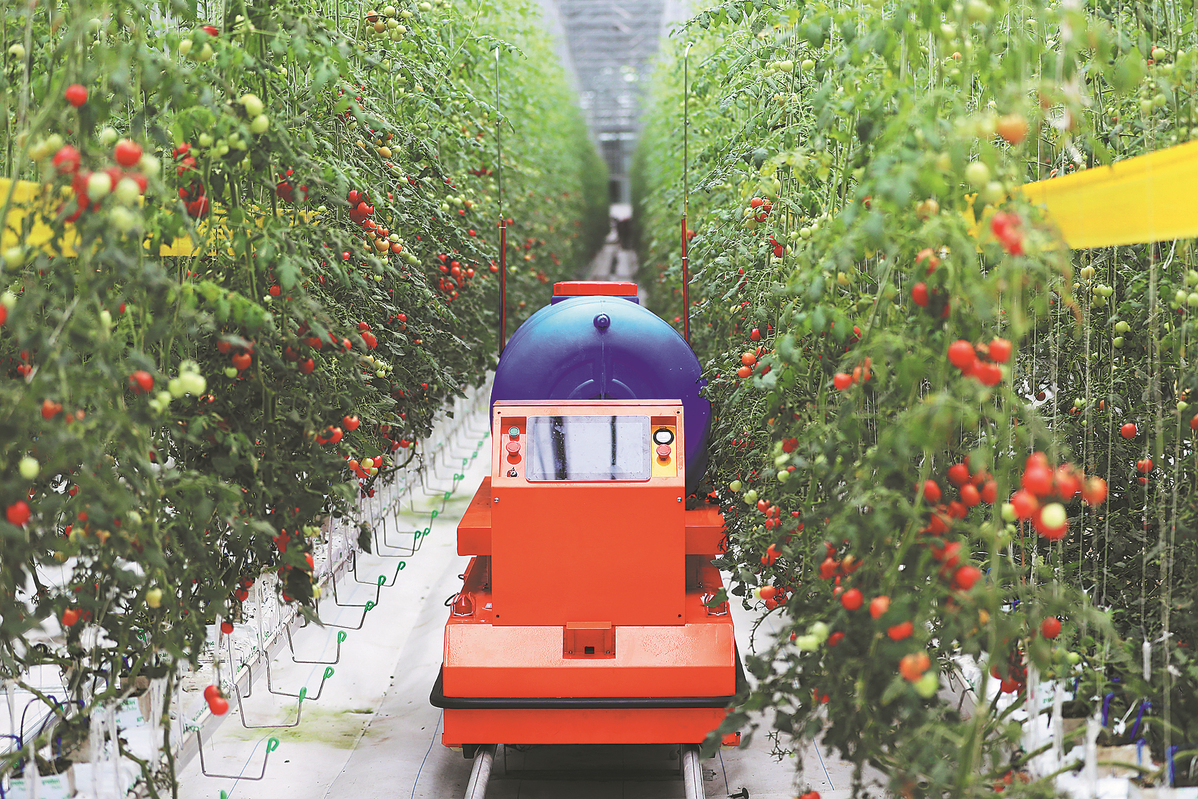
中文


Home

CAE in Media

Detail
Life made easier as farmers turn to tech
- Published: Apr 7, 2023
- Source: ChinaDaily
- Font size: BigMediumSmall

A robotic device operates in a smart greenhouse in Shouguang. [Photo provided to China Daily]
Smart greenhouses
At a demonstration base in Shouguang for modern agricultural techniques, a smart glass greenhouse being used to grow tomatoes features more than 120 patented technologies developed by a team from the Chinese Academy of Engineering.
Data showing humidity, temperature and carbon dioxide levels are updated on a large electronic screen in the greenhouse.
Covering about 80,000 square meters, the area occupied by 11 standard soccer fields, the greenhouse requires few workers. Instead, robots and other devices are used to pick and transport the tomatoes.
Wang Haiguang, deputy director of the operations office at the greenhouse, said, "As it would be very difficult to manage such a big structure with a human labor force, we use a cloud management system to maintain the right conditions for the crops."
Sensors collect information about humidity, water, fertilizer, sunlight, heat and ventilation, which is uploaded to a platform to be analyzed. Based on the analysis, the correct levels of water and fertilizer are supplied to the crops by the automatic irrigation system, Wang said.
With air-source heat pumps and facilities to store heat, the structure does not consume huge amounts of energy in winter, unlike traditional greenhouses.
"Growing crops in a controlled environment enables farmers to produce high-quality plants, maintain high food safety standards, and avoid the use of pesticides," Wang said.
In addition to the smart greenhouses, organizations such as the Chinese Academy of Agricultural Sciences, Chinese Academy of Sciences, and the National Research Center for Information Technology in Agriculture are developing greenhouses at the demonstration base by using state-of-the-art technologies on a trial basis.
These structures include new-material greenhouses, those with sliding covers, and assembled prefabricated greenhouses.
Wang said, "Many of the newly developed technologies have been promoted for widespread use among farmers."
For example, in Cuilingxi village, farmer Cui Xinzhong uses his smartphone as a "highly efficient and valuable agricultural tool".
In one of Cui's greenhouses, which occupies 2,600 sq m and grows tomatoes, an electronic screen shows data about the interior conditions, such as the temperature and pH value of the soil, which refers to its concentration of hydrogen.
Cui uses his phone to control smart systems in his greenhouses. When he clicks on the irrigation button, the system begins watering the tomatoes.
The greenhouse also features smart devices to adjust fertilizer levels and the lighting.
"Years ago, growing vegetables in a single greenhouse was tiring work, but now my wife and I grow them in three greenhouses," Cui said.
Greenhouses equipped with smart systems based on the internet of things and big data account for more than 80 percent of the total number in Shouguang, according to the city government. Shouguang now boasts 173,000 greenhouses producing 4.5 million metric tons of vegetables annually.
